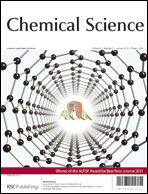A series of six self-propagating molecular assemblies (SPMAs) were generated by alternative solution-deposition of ruthenium polypyridyl complexes and d8palladium and platinum salts on glass and silicon substrates. The d6 polypyridyl complexes have three pyridine units available for forming networks by coordination to the metal salts. This two-step film growth process is fast (15 min/step) and can be carried out conveniently under ambient conditions in air. The reactivity of the common metal salts (ML2X2: M = Pd, X = Cl, L = PhCN, ½ 1,5-cyclooctadiene (COD), SMe2 and M = Pt, X = Cl, Br, I, L = PhCN) is a dominant factor in the film growth. Although the assembly structures are comparable, their exponential growth can be controlled by varying the metals salts. The co-ligands, halides, and metal centers can be used to control the film thicknesses and light absorption intensities of the metal-to-ligand charge transfer (MLCT) bands by a factor of ∼3.5 for 13 deposition steps, whereas the surface morphologies and molecular densities of the SPMAs are similar. The surface-confined assemblies have been characterized using a combination of optical (UV/Vis, ellipsometry) spectroscopy, atomic force microscopy (AFM), X-ray photoelectron spectroscopy (XPS), and synchrotron X-ray reflectivity (XRR).


 Please wait while we load your content...
Please wait while we load your content...